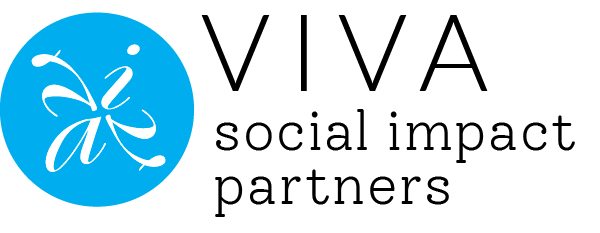4 min read
Early Identification & Intervention: Lessons from Help Me Grow LA
Katy Nagy
April 2, 2025
Blog

Early childhood is a crucial time for brain development. When children have development delays,catching and supporting them as early as possible can have a profound impact on their long-term well-being.
In California, disparities in early intervention persist, particularly among children of color. Latinx, African American, and Asian children experience lower developmental screening rates, delayed diagnoses, and fragmented care coordination, exacerbating broader health and developmental inequities.
To address these disparities, First 5 LA, in collaboration with the Los Angeles County Department of Public Health, L.A. Care Health Plan, and the American Academy of Pediatrics (AAP) Chapter 3, launched a strategic initiative to improve developmental screening and early intervention (EII) referrals in Los Angeles County.
Their efforts align with California’s Medi-Cal program reforms, which aim to address health inequities like these by enhancing preventive care, improving care coordination, and addressing social determinants of health.
A Collaborative Effort for Change
Since 2016, First 5 LA has led Help Me Grow (HMG) LA, helping families access early intervention resources. As part of this effort, First 5 LA and the Los Angeles County Department of Public Health partnered with L.A. Care Health Plan in 2021 on a four-year initiative to support pediatric providers. Pediatricians are often families’ first and most important partners in identifying development delays–yet in LA County, too few were conducting screenings, and those who did faced challenges in knowing where and how to refer families for more support. The initiative focused on two key objectives:
- Increasing awareness and education about the importance of developmental screening.
- Integrating early intervention protocols into clinical workflows.
Participating practices received targeted support to integrate developmental screening and referral protocols into their practices. That included coaching on workflow improvements and direct collaboration with regional centers. Over four years, the initiative engaged two cohorts of 6 total pediatric medical practices, covering 30+ practice sites across L.A. County.
Progress and Impact: Evaluating the Partnership
From 2022 to 2024, VIVA conducted a rapid cycle evaluation of the HMG LA–L.A. Care partnership. The evaluation, designed in collaboration with First 5 LA, L.A. Care, and the Los Angeles County Department of Public Health, aimed to capture lessons learned, assess effectiveness, and identify opportunities for improvement.
Using a phased approach, we collected and analyzed data across three cycles over 24 months, incorporating both administrative data from L.A. Care and qualitative insights from focus groups with participating providers.
Key Findings
The evaluation revealed significant progress in developmental screenings, community engagement, and provider education. However, persistent disparities in screening rates and referral challenges highlight areas where additional efforts are needed.
- Developmental screenings surged
- All participating practices exceeded the targeted 15% increase in developmental screenings.
- Cohort 1 practices saw a 593% increase in average monthly screenings between July 2021 and January 2023.
- Cohort 2 practices, which started at zero screenings, conducted 138 screenings between February and September 2023, increasing screenings by another 57% from October 2023 to May 2024.
- Racial disparities persist, with White children receiving screenings at higher rates than Black children and those categorized as “Other” or “Missing Race.”
- EII referrals improved but remain challenging
- Closing referral loops remains a significant challenge, particularly for referrals to regional centers.
- Practices that successfully completed referrals invested in building direct relationships with regional center staff, maintained up-to-date contact information, and proactively educated families about the referral process.
- Referral data limitations highlight the need for improved tracking and follow-up mechanisms.
- Community education and outreach expanded
- Over 530 parents/caregivers participated in community education classes, with 98% reporting increased knowledge and confidence in advocating for their children.
- Extensive outreach efforts led to the distribution of 3.7 million newsletters and 5,960 social media interactions.
- Provider education and engagement strengthened
- Over 700 providers attended Continuing Medical Education (CME) events, with 83% indicating that they plan to make improvements or changes after attending the CME event.
- Additional training sessions reached 129 providers on developmental screenings and 72 providers on referral processes.
- Well-child visits and immunizations showed mixed improvement
- The percentage of 15-month-old children receiving six or more well-child visits at Cohort 1 practices was equal to the L.A. Care aggregate rate.
- Cohort 1 practices exceeded L.A. Care’s aggregate rate by 16 percentage points for the percentage of 30-month-old children who received two or more well-child visits between 15 and 30 months of age.
- The immunization rate for 2-year-olds was slightly higher for Cohort 1 practices compared to the L.A. Care aggregate rate, statewide aggregate rate, and national benchmark.
- Rates for well-child visits and immunizations declined between 2022 and 2023.
Lessons Learned and Recommendations
Lessons Learned
- Data quality: Consistent and standardized data collection is essential to assessing equity and tracking improvements. Investments in automated tools and data capacity-building can help providers sustain progress.
- Referrals to regional centers: Referral challenges point to the need for standardized intake, referral, and follow-up processes.
- Community and provider outreach: Outreach efforts, including community classes and CME events, effectively increased knowledge about child development and early intervention.
- Modifying workflows: Technology and coaching helped practices integrate screenings into their workflows, but ongoing support is needed to sustain these efforts.
Recommendations for Managed Care Plans and Other Stakeholders
- Build data capacity: Managed care plans and healthcare organizations should invest in data systems to support standardized screening and referral tracking. Subsidizing access to data platforms and offering technical assistance can help.
- Address access disparities: Use disaggregated data to identify and address racial disparities in developmental screenings. Support culturally responsive care by co-designing solutions with families and investing in staff training.
- Advocate for standard regional center processes: Work with advocacy groups and other partners to standardize referral and follow-up procedures across regional centers.
- Enhance child development education and resources: Increase access to educational resources for providers and families, leveraging community partnerships to promote awareness and early intervention.
- Provide capacity building support: Offer coaching, technical assistance, and funding to help providers implement effective screening and referral processes. MCPs can align this work with CalAIM’s Providing Access and Transforming Health Technical Assistance (PATH TA) program.
For more findings and recommendations from this work, we’ve also written about how to ensure screening and referral partnerships are successful and recommendations for efforts to close referral loops.
The Road Ahead
The Help Me Grow LA–L.A. Care partnership demonstrates that targeted provider support, community engagement, and workflow integration can dramatically increase developmental screenings and improve referral processes. However, closing referral loops, addressing disparities, and sustaining improvements require ongoing investment, collaboration, and policy changes.
As California continues to advance its early intervention and Medi-Cal reform efforts, the lessons from this initiative can inform strategies to ensure all children receive the development support they need–regardless of race or background. By working together—providers, managed care plans, regional centers, and communities—we can build a stronger, more equitable system for early childhood development.
